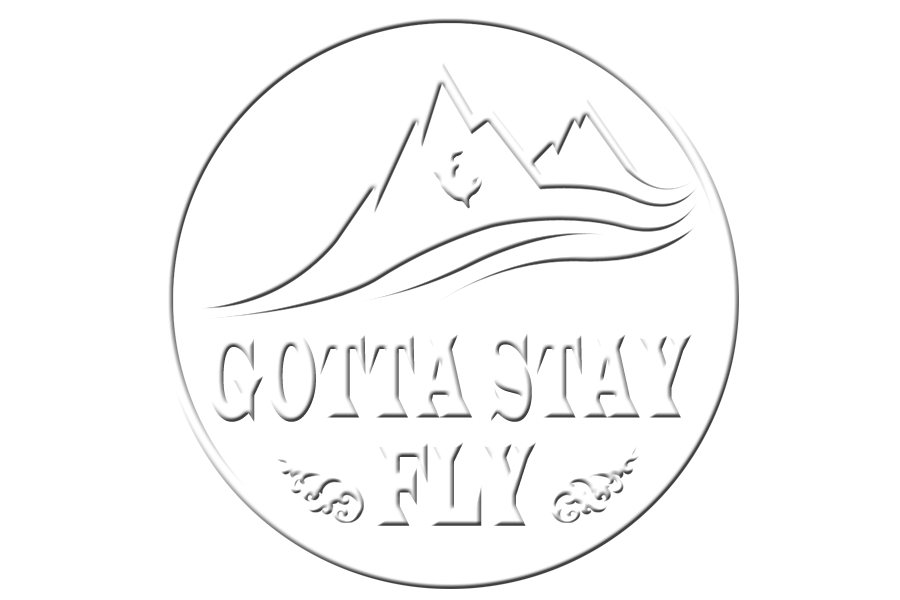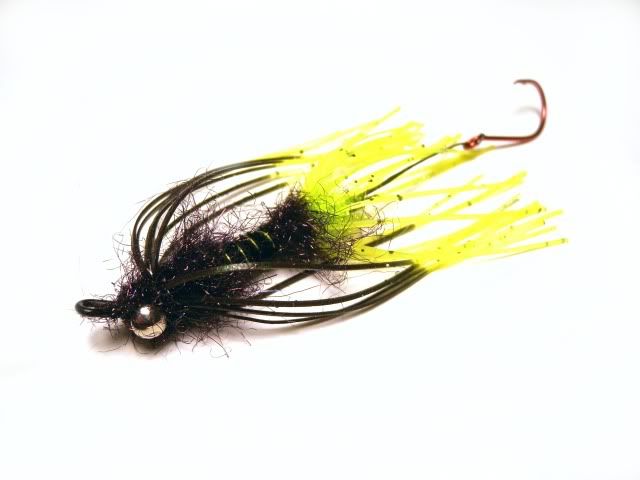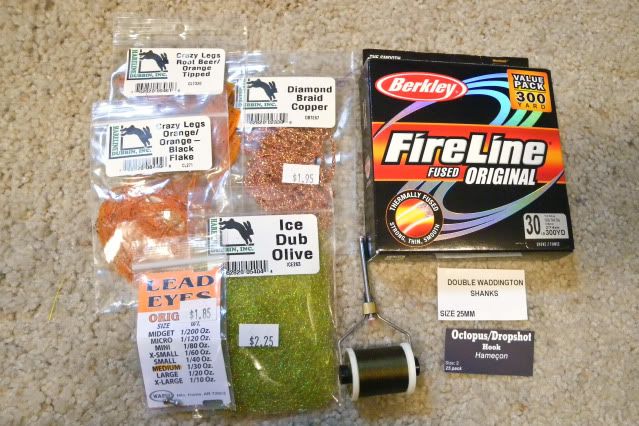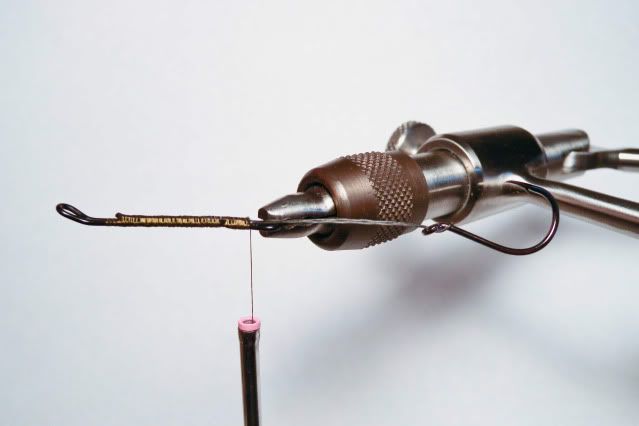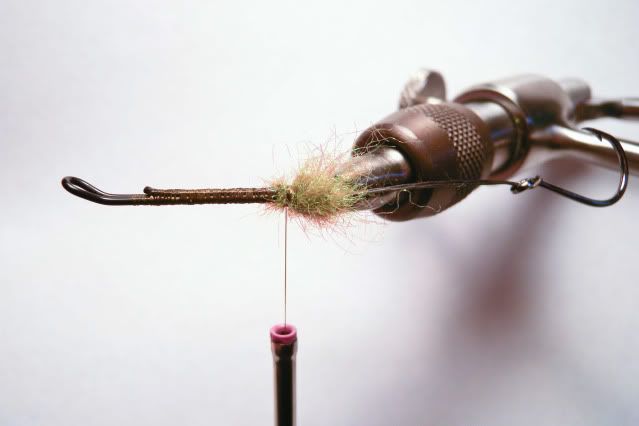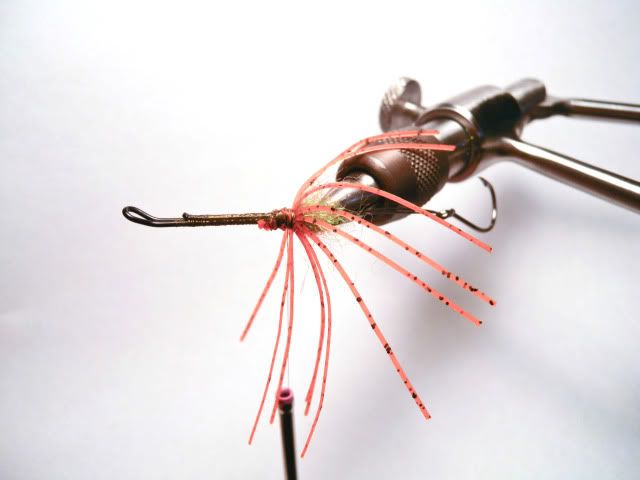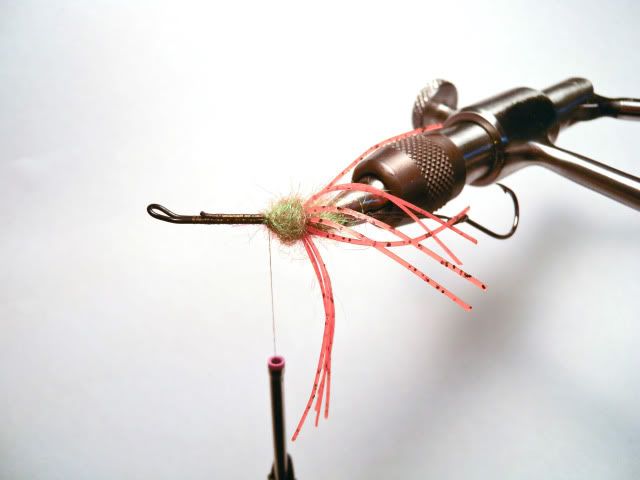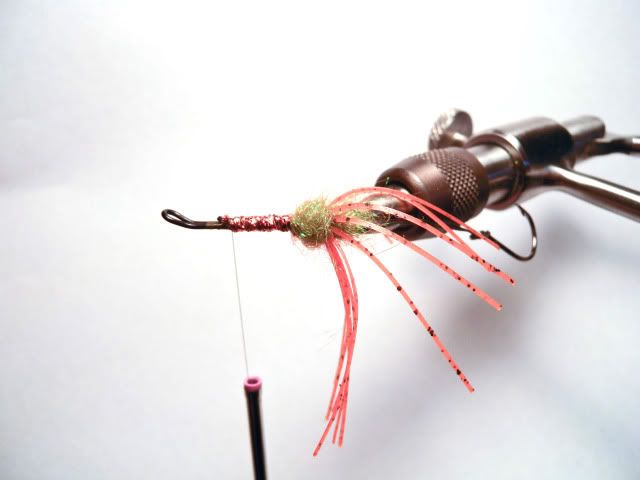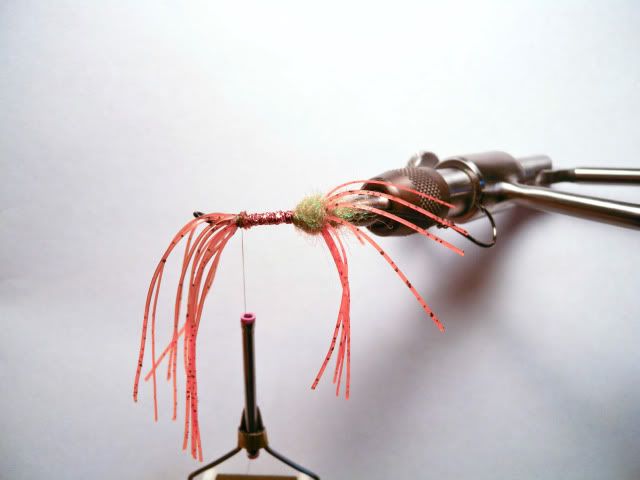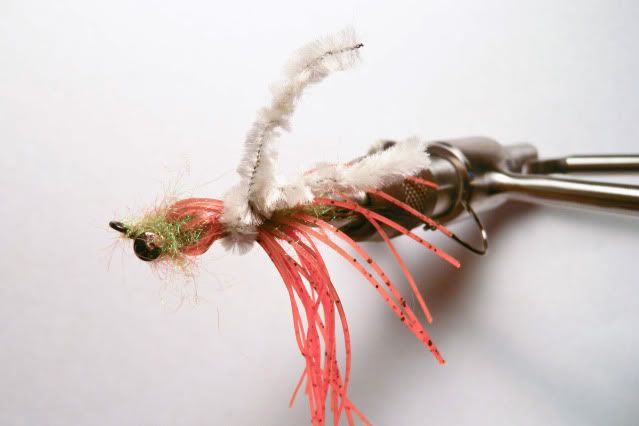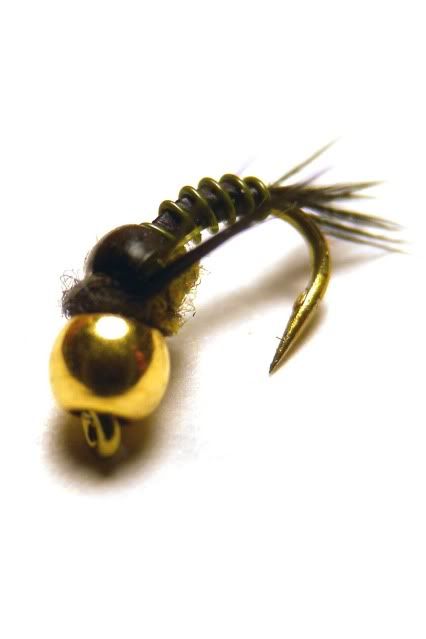
Since the high Sierra trout season opener is just around the corner, I thought I'd tie up a couple of my favorites. The two flies I'm about to show are two of my most productive. I was introduced to them by Matt "Gilligan" Koles almost a year ago to the day, so I decided I'd finally share them now that they've been through the ringer. The "Gilligan Baetis" is one of those flies that at first glance looks entirely too simplistic, but just fish it and shortly that doubt will disappear. I used to fish a similar bead-head pattern on a curved shanked hook called the Barr emerger. That pattern definitely held its own, but the Gilligan Baetis just undeniably out-fished it after putting it to the test. Here it is.
Materials:
Hook: Tiemco 2457, Size #16-18
Bead: 7/64 Gold
Thread: Black 6/0
Tail: Black Hen Back Hackle
Rib: Olive Wire, Size Small
Wingcase: Black Thin Skin
Thorax: Olive Dubbing of choice
Legs: Black Hen Back Hackle
Collar: Fine Black dubbing
1. Tie in some hen back hackle fibers for a tail. The fibers should extend about a half a shank's length.
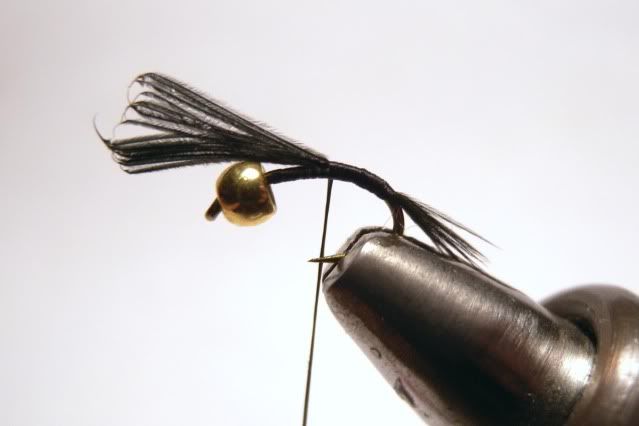
2. Tie in a piece of wire directly on top of the hook shank and cover it completely with thread. Wrap the thread slightly down the bend of the hook. Make sure all of the wire/shank are covered with thread as this will serve as the body.
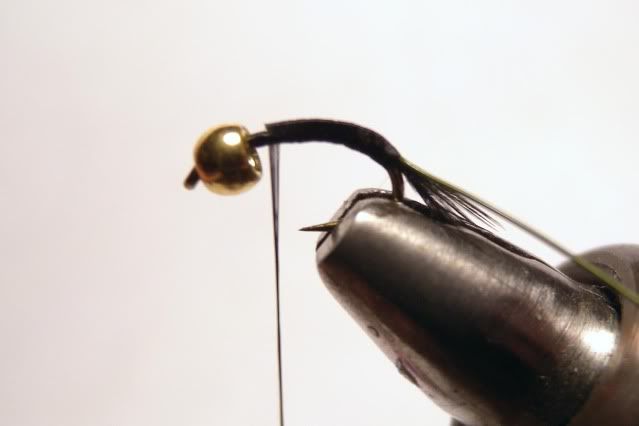
3. Wrap the wire forward and create even segments.
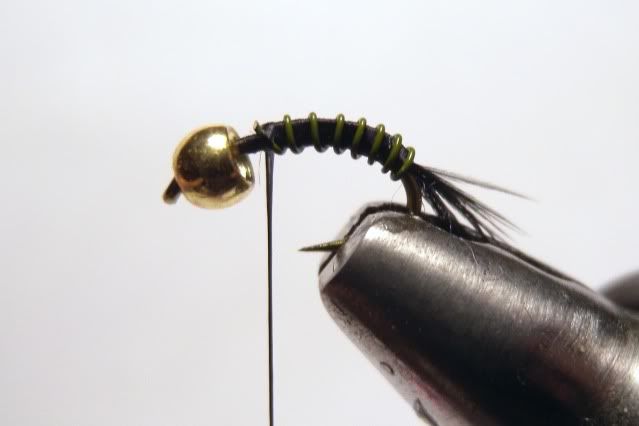
4. Cut a small strip of thin skin about half as wide as the hook gap. At about the 60% mark tie in the thin skin on top of the hook shank.
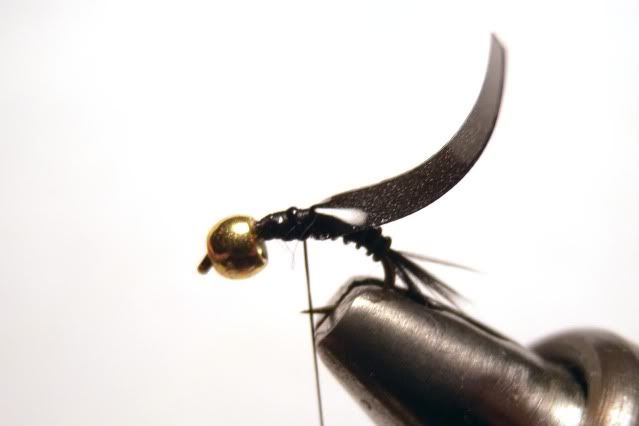
5. Dub the thorax.

6. Tie in some hen hackle fibers for legs on each side of the hook shank. The legs can extend as far as seems fit. (Here's a top view for reference)
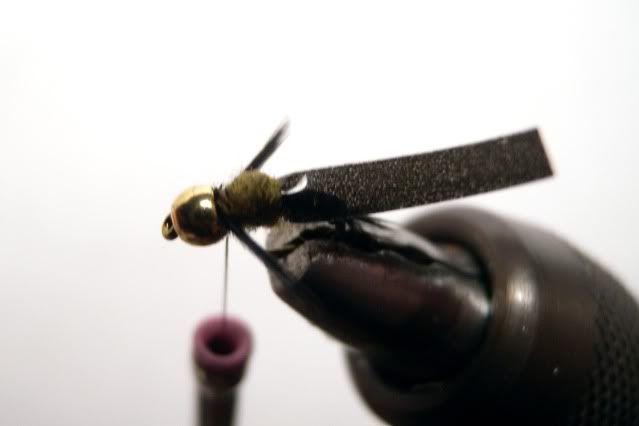
7. Pull the thin skin over the thorax and tie it down.
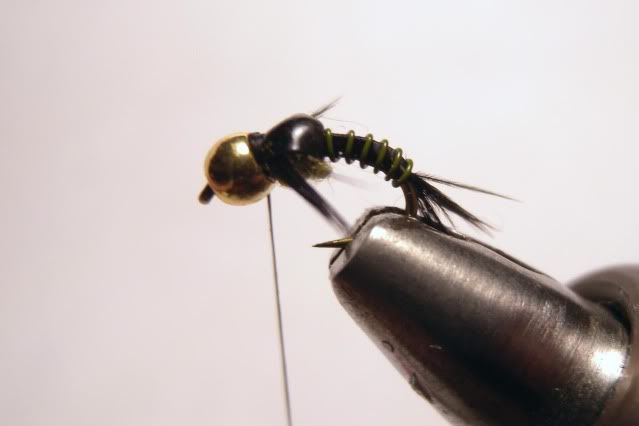
8. Dub a small black collar and tie off.
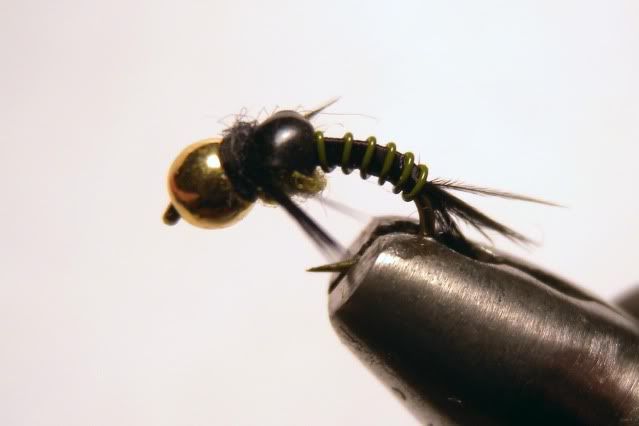
The next fly is an amazing attractor pattern as well as a big fish magnet. A few of my largest fish this year to date have fallen to this fly. The San Juan Worm is straight up a deadly and simple pattern. The problem I found with the San Juan Worm is its durability. Many times after a few fish the chenille will start to fall apart even if the tips are burned. This next fly solves that problem and the materials used also add some weight to help it get down. It is known as the Wire Worm, the Pig Sticker, and the Get Down Worm. Regardless of what its called, it'll nail some fish.
Materials:
Hook: Kahle Style worm hook #6 or 8
Thread: UTC Ultra thread 140 denier Fl. Fire Orange
Body: Red wire, Size Brassie or Medium
Thorax: Thread coated in Sally Hansen's or Loon Hard Head
1. Tie in wire on top of hook starting at the front and proceed to wrap to partially down the hook bend.
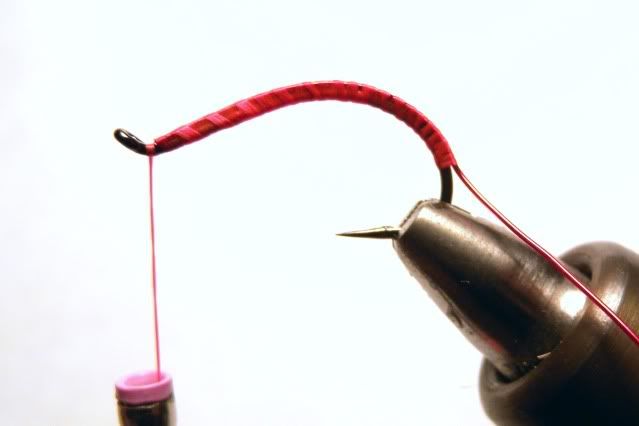
2. Tightly wrap wire forward making sure not to leave any gaps in between wraps. Whip finish and tie off.

3. Create a small thorax/hot spot from the 60-80% mark over the wire with tying thread. Create a small hump with the thread and tie off.
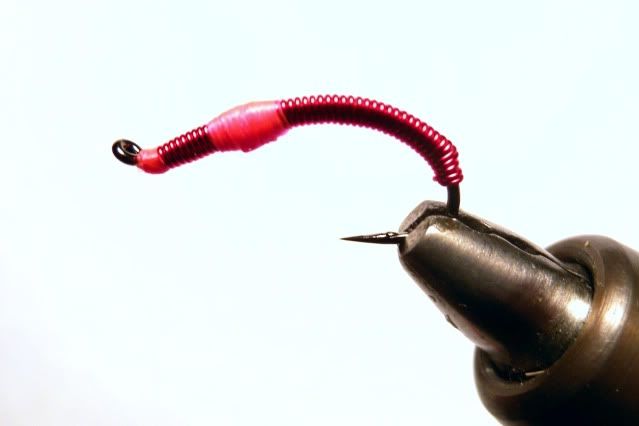
4. With some Sally Hansen's or Loon Hard Head, create a small, clear segment.
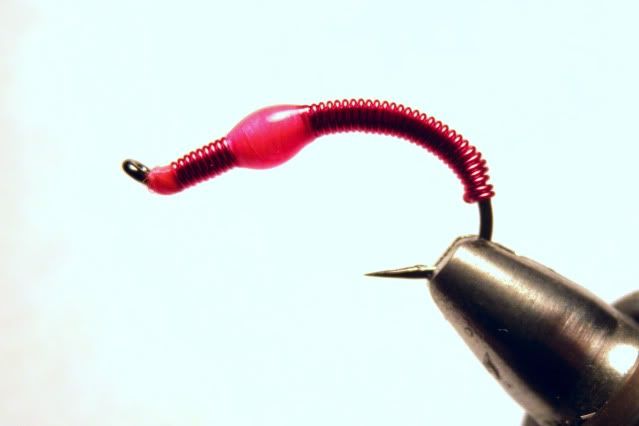
Now with both of these tied, I must say the combination of the two is straight deadly. With a typical indi/bobber set-up I'll run the worm first with the Gilligan Baetis trailing. This set-up is my go to in unknown situations. The theory behind it being that the big worm acts as an attractor and a lot of times the fish will rush over to check out the worm but then take the baetis. That's why in lots of situations where I have an idea of what's on the river bottom I'll make my top fly the worm and my bottom fly/flies one that is more like what the fish might be feeding on. However, the worm will pegs many fish by itself too. Give it a shot this Spring!
Stay fly
T
